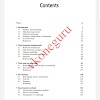Candidate must have sufficient knowledge in the following subjects and are required to
revise prior appearing for online test.
These topics have already been taught during the graduation.
INTERVIEW SYLLABUS FOR GME’s
Candidate must have sufficient knowledge in the following subjects and are required to revise
prior appearing for interview. These topics have already been taught during the graduation.
1. MECHANICS/ FLUID MECHANICS/ HYDROSTATICS
a. Work, power, energy, concept of force, vectors and concept of friction/lubrication.
b. Theory of viscosity, flow, nozzles, venturi
c. Bernoulli’s and Archimedes principle
d. Operating theory and principle of different types of pumps.
e. Reciprocating Air Compressors Basics.
2. STRENGTH OF MATERIALS
a. UTS, Young’s modulus, Poisson ratio , stress/strain
b. Shear force and bending moment.
c. Material testing / NDT
3. MATERIAL SCIENCE/ METALLURGY
a. Iron and manufacturing process
b. Property of iron and its alloys
c. Theory of failure ( fatigue, creep, stress hotspots etc)
d. Different types of failures. Heat treatment process
e. Corrosion
4. THERMODYNAMICS
a. Basic gas laws,
b. State the laws of thermodynamics. What do you understand by a Heat Engine and Heat
Pump? Basics of refrigeration cycle.
c. Basic cycles, efficiency , different process ( adiabatic, isothermal etc)
d. Heat transfer theory
e. AC and Ref theory. Enthalpy diagrams, entropy charts, Mollier charts etc. Types of
refrigerants used in marine industry.
f. Air compressor theory
g. Types of Boilers and safety fittings
5. ELECTRICAL MACHINES AND BASIC ELECTRONICS/INSTRUMENTATION
a. Basic theory of electricity , its laws and network theorems, electromagnetic theory and
faradays laws of electrolysis
b. AC and DC circuits. How AC and DC is generated.
c. Basic knowledge of semiconductors. Transducers, measuring devices and control circuit terminology.
d. Theory of operation of Induction motors.
6. WORKSHOP TECHNOLOGY
a. Mechanics of machining, single and multi-point cutting tools, tool geometry and materials, tool life and wear;
economics of machining; principles of non-traditional machining processes; principles of work holding.
b. Metrology and Inspection: Limits, fits and tolerances; linear and angular
Measurements; comparators; gauge design; interferometry; form and finish
Measurement; alignment and testing methods
c. General workshop tools including hand tools.
7. MATERIAL SCIENCE/ METALLURGY
a. Describe the process of production of pig iron from iron ore. Describe the principle of production of steel
from pig iron by the following process: - open hearth, Bessemer converter and modern process. Explain the
following properties of materials used in engineering: - Elasticity, brittleness, hardness, strength, toughness,
ductility, malleability, plasticity and workability. How is steel categorized on basis of carbon percentage?
b. Define the term isotropic. What do you understand by the terms:-cold working, hot working, strain hardening,
forging, and stress concentration. State the composition of the following materials: - Cast Iron, Cast Steel,
Mild Steel, Stainless Steel and high tensile steel. Briefly compare their properties characteristic and list their
use.
c. Define the terms corrosion and erosion. Give examples. Explain the principle of a Galvanic cell. List the
metals in their electro chemical potential. Identify the noble metal and the sacrificial metals in the list. List the
different types of corrosion and explain their causes.
8. INTERNAL COMBUSTION ENGINES / DIESEL ENGINE CYCLE
a. Basic knowledge of 2 stroke and 4 stroke engine. Main Components of Diesel Engine ,
and valve timing diagrams.
b. Draw the pressure vs volume curves for the Otto, Diesel and Dual cycle and compare the process. Compare
the advantages and disadvantages of these cycles. How is the actual cycle process measured in an operating
engine? Define ENGINE. Define INTERNAL COMBUSTION ENGINE. What is the meaning of SI and CI
engine? Diesel engine is what type?
c. Explain a 2 stroke and a 4 stroke cycle. Compare the cycle for a 2 stroke and a 4 stroke
diesel engine. Draw p-v curves and identify important phases of the stroke in it.
d. Prove mathematically: - the area under a P-V curve is the work done. Derive the equation for power output
P= Pm x L x A x n
e. Marine Exhaust gas Turbocharger.
Click here to download GME syllabus and application form
Click here to download
Fee structure
Download the app Now STUDY MANIA
If you are not able to view these PDF file.. please give permission to" Request to access the file " and wait for some time and then Retry once... Or you may also comment " open #topice " in comment section of blog .
For more details regarding any issue you may mail us on vkoneguru@gmail.com











1 Comments
Good information in a single page ...
ReplyDeleteThank u sir ..